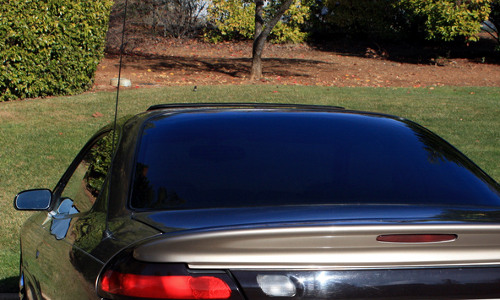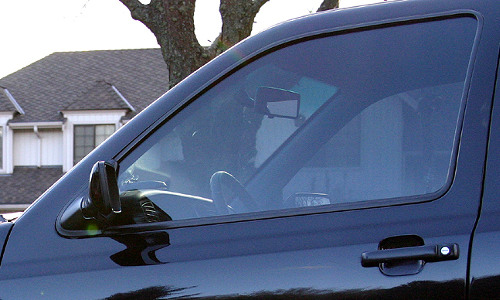4 Keys to Purchasing Window Tint: A Consumer’s Guide
If you’ve recently purchased a new vehicle, there’s a good chance that you’ve considered having window tint professionally installed on your vehicle…especially if you live in a warmer climate. As with any after-market vehicle accessory, it’s crucial to understand exactly what to look for when making your purchase decision.
Let’s go over a few things that will broaden your knowledge as a consumer, and arm you with the ability to make the wisest purchase.
Four Big Window Tint Questions
1. What is the heat blockage rate of the film? This is an especially important question if you live in a warmer climate. Window tint films have a heat protection rate that can range from 10% to nearly 100%. If you’re like most drivers, chances are that your best option will be found somewhere in the middle.
- If you live in a temperate climate, a tint film providing 25-40% heat protection is ideal. Most experts would say this is enough for a motorist driving in a city where temperatures only seldom top 85 degrees, yet this heat protection level still allows enough sunlight into your vehicle in winter months to help warm the interior.
- For those living in a climate where temperatures normally top 90 degrees for at least 3 months a year, it may be a worthy investment to install a film with a minimum of 50% heat protection. Although it may increase the price tag, it’s reasonable to assume that you’ll be thanking yourself every time you enter your car on a warm day.
For those seeking a 50% heat blockage rate, expect to pay $180-$250 to tint a 4-door sedan.
2. What is the aesthetic quality of the film? If you drive down a road for 30 minutes, you may notice a wide variety of tinted vehicles. After a while, you may begin to notice some of the visual differences. While some films could pass for factory-installed, others may sport a more basic, after-market look…and others may have deteriorated completely.

A very dark tint film, often called limo tint, can look great, but a poor quality installation will be very obvious. Image copyright aresauburn (click on image for more info).
The aesthetic quality you desire will influence heavily the price you pay for tinting. While a more basic (yet stable) film may cost starting in the $150-$160 range, a top-line film could command as much as $400. As with most things, there is usually a middle ground to be had. For this reason, it’s essential that you insist to see film samples before installing a film. Wouldn’t you like to know that the film you installed looks spectacular on your vehicle?

Typical window tint films reduce the amount of light that enters the vehicle without degrading visibility. Image copyright nappent (click on image for more info).
3. What type of warranty is offered? Although virtually all films come with some sort of warranty, it’s important to understand the type of warranty that is included with the film you purchase. Most of the time, you will find that a “lifetime warranty” will be included with the tint film you purchase. The important thing you need to ask is “what exactly is covered?” You’ll first want to ensure that the film manufacturer will cover the window tint product itself. If anything like color change were to occur, the film manufacturer would ensure that it was re-installed at no charge. All manufacturer’s warranties have documentation; make sure the service you use for window tinting gives you that documentation.
You’ll also want to ensure that the installation is covered. If a film begins to bubble, its normally not a product fault, which is why a manufacturer will often not cover that. This is something that is installation-related, and should thus be covered by the installing company. Make sure to receive proper documentation on that as well.
4. What are the legal tint limits in your area? Different cities, counties, and states have different rules and regulations regarding window tint. If, for example, you install a very dark “limo” tint on your vehicle, you could be ticketed for driving an unsafe vehicle. Therefore, before you buy any window tint, be sure to ask the installer if the tint level is legal.
A good tip: If your installer isn’t willing to give you a receipt and only accepts cash, the window tint film is likely too dark to be legal. Installers rarely like to give receipts when they install illegal tints, as they can be sued and/or prosecuted after the fact.
We have reviewed 4 crucial components that go into the window tinting purchase decision that you will be making. By doing your due diligence, it is far more likely that you will be satisfied with your purchase; not only now, but in future years as well. Wouldn’t you want to know that you got better value for your money by simply being informed?
Guest Author Jared Diamond writes for DetailWiz.com









I just got my car tinted, and this is some good info!
When purchasing window tinting film, the first thing you need to know is that residential window films are different from auto window films. Do not use a residential window tinting film for your car. Some people use auto window tint for their house windows but must take some precautionary measures to properly install it on their residential windows.
Applying window film to your vehicle is a tiny Investment that pays big dividends for as long as you own it! Window Tinting Florida